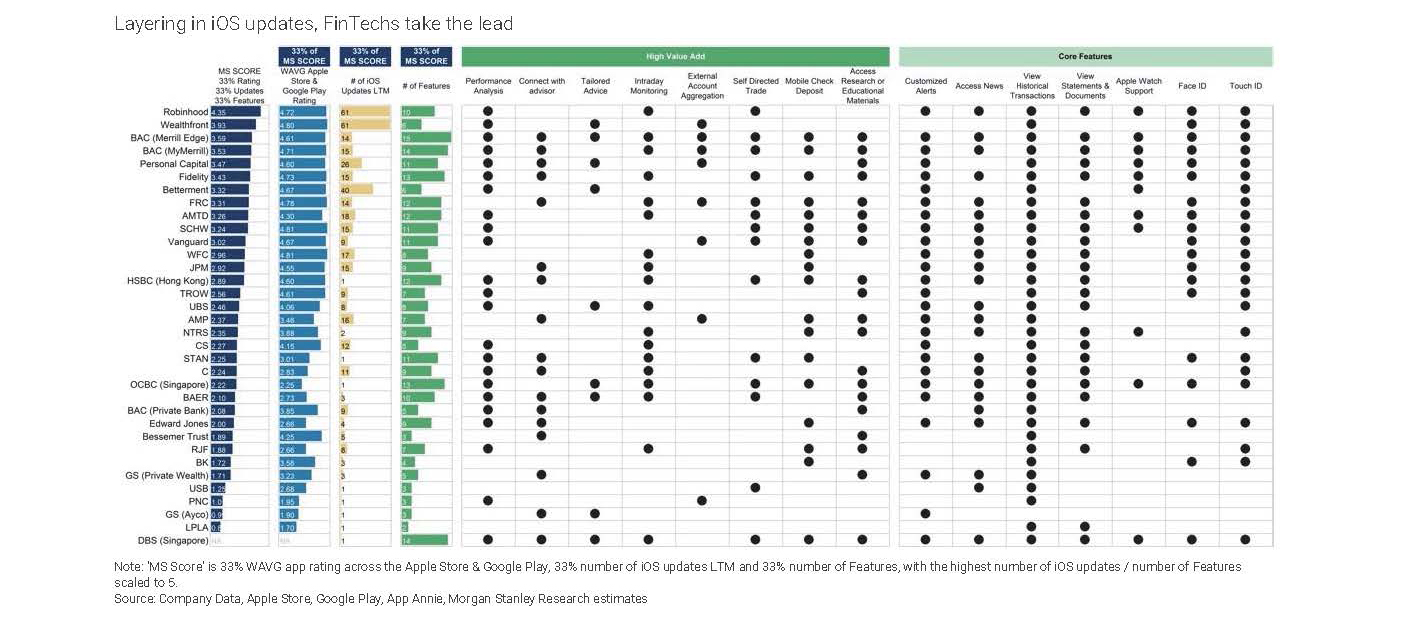COVID-19 disruptions to the markets and the economy will hasten adoption of digitization and a need for scale in the wealth management space, according to an extensive report published by Morgan Stanley and Oliver Wyman on the state of wealth management post Covid-19.
The takeaway? Over the next few years, advisors should expect to see an accelerated wave of consolidation, as “sub-scale” advisors look for better technology platforms than what they can buy or build themselves.
During the pandemic, wealth management firms saw a seven- to 10-times increase in engagement across all digital channels, including a four- to five-times increase in accessing digital research, three- to four-times increase in client-facing webinars, and more than doubled the number of client meetings over video.
The lockdowns prompted a “significant upward shift in client expectations of their wealth manager’s digital capabilities,” according to the report. Smaller firms struggled with that, lacking “the remote working protocols and digital client engagement infrastructure.”
And wealth management firms fall significantly behind banks when it comes to deploying technology, the report says.
“The industry’s technological capabilities remain immature ... especially in comparison to retail banks. Improvement in retail banks’ client-facing digital capabilities has been driven by evolving client expectations and a strong need to reduce cost-to-serve to protect profitability. Wealth managers have not yet experienced similar levels of urgency.”
The report relies in part on how frequently client-facing applications are updated to discern a firm’s tech-savviness; retail-facing banks updated their apps twice as often as wealth management firms, but both channels fall far behind pure-digital financial services firms, like Robinhood, Wealthfront and Betterment. When layering in weightings of average reviews from users in Apple Store and Google Play, as well as functions, only Bank of America and the discount brokers/RIA custodians land in the top of the list dominated by technology upstarts.
While acknowledging that the two groups serve different demographics, “the ease of use, frequency of updates and relatively intuitive interface at fintechs likely sets high customer expectations for financial services apps more broadly.”
Wealth managers who have been stung by employing less-than-optimal technology during the crisis will find a path toward partnering with platforms or aggregators that have the capabilities, according to the report.
The report acknowledges that 85% of HNW investors say they “value” the ability to talk to a human financial advisor, they expect to interact with their wealth management firm with increased “omni-channel” touchpoints; 80% of financial advice will be delivered via means other than in-person meetings by 2024. Advisors will see 15% of financial advice delivery occurring via videoconferencing, 10% by phone, 10% by website, 10% by live chat, 5% by email and another 5% by webinar.
Among all the channels a client will interact with a wealth management firm, apps will be used for 25% of the overall relationship four years from today, according to the report.
While some firms are better positioned than others, all have room to improve their app experience and expand their product offerings, concluded the report. In the years ahead, the wealth management industry will contend with the headwinds of low interest rates and a need to invest in technology, defending revenue while promoting advances in digitization and finding new ways to place its services in the center of clients’ needs.


